The latest Statement of Monetary Policy (SoMP) from the Reserve Bank of Australia (RBA) forecast that Australia’s unemployment rate will peak at 4.3% early next year.
The federal budget was more pessimistic, forecasting an unemployment rate of 4.5% by June 2025.
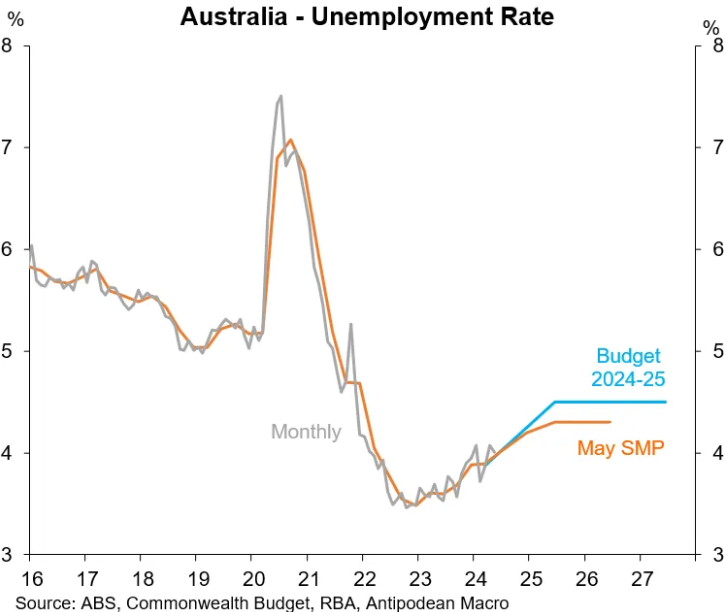
The latest job ad data suggests that the RBA’s unemployment forecast is too optimistic.
On Thursday, the Australian Bureau of Statistics (ABS) released job vacancy data for the three months to May.
Job vacancies fell by 2.7% over the quarter to be down 26.0% year on year.
The below chart from Justin Fabo at Antipodean Macro tells the tale:
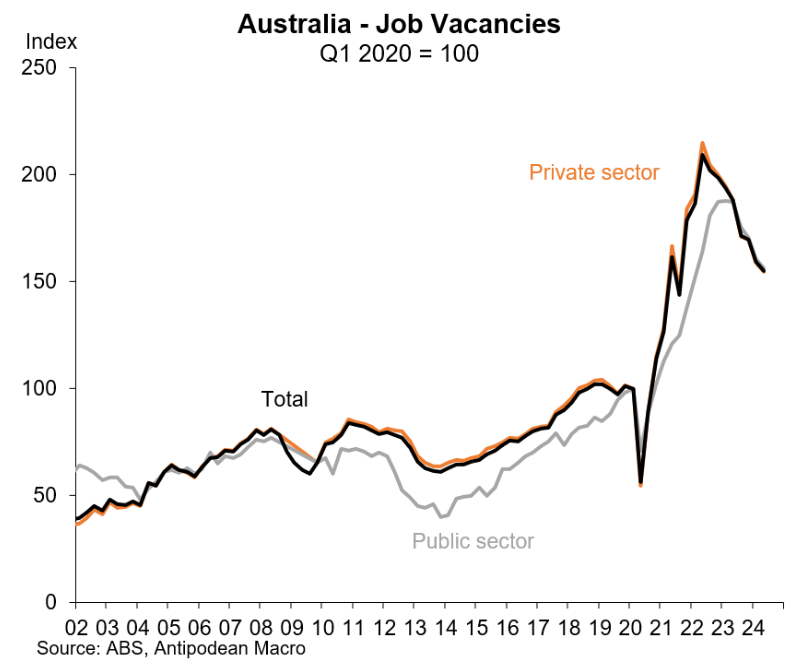
Plotting job vacancies against the unemployment rate yields the following:
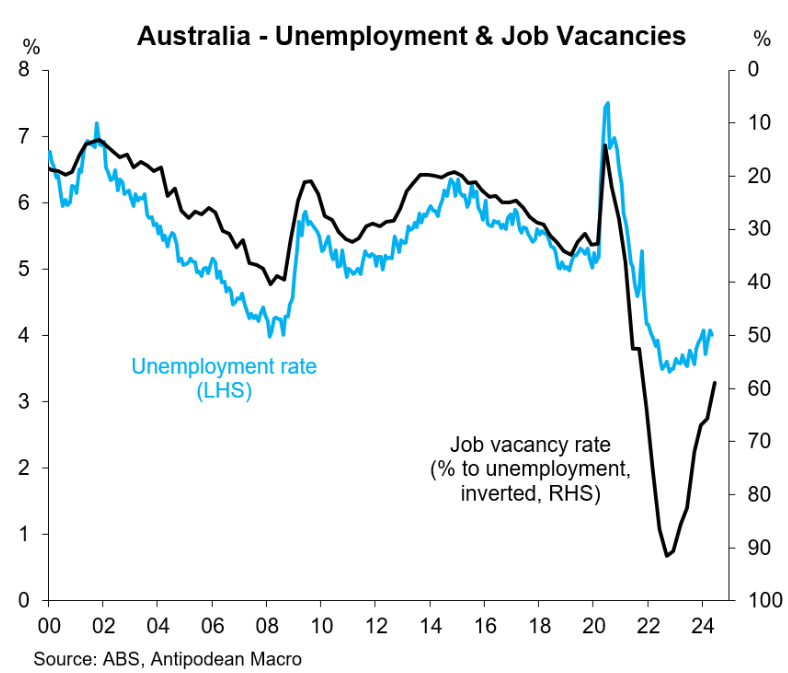
While job vacancies are falling fast, they remain at a high level overall and are still consistent with low (albeit rising) unemployment.
Other job vacancy series are less favourable.
SEEK’s monthly job ad series is pointing to a faster rise in unemployment:
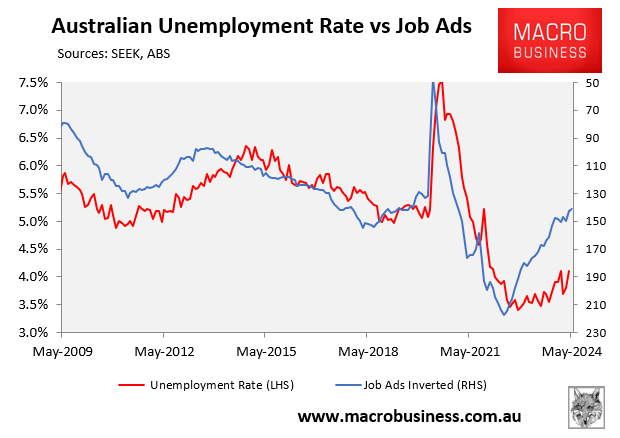
Similar can be said for the ANZ-Indeed job ad series:
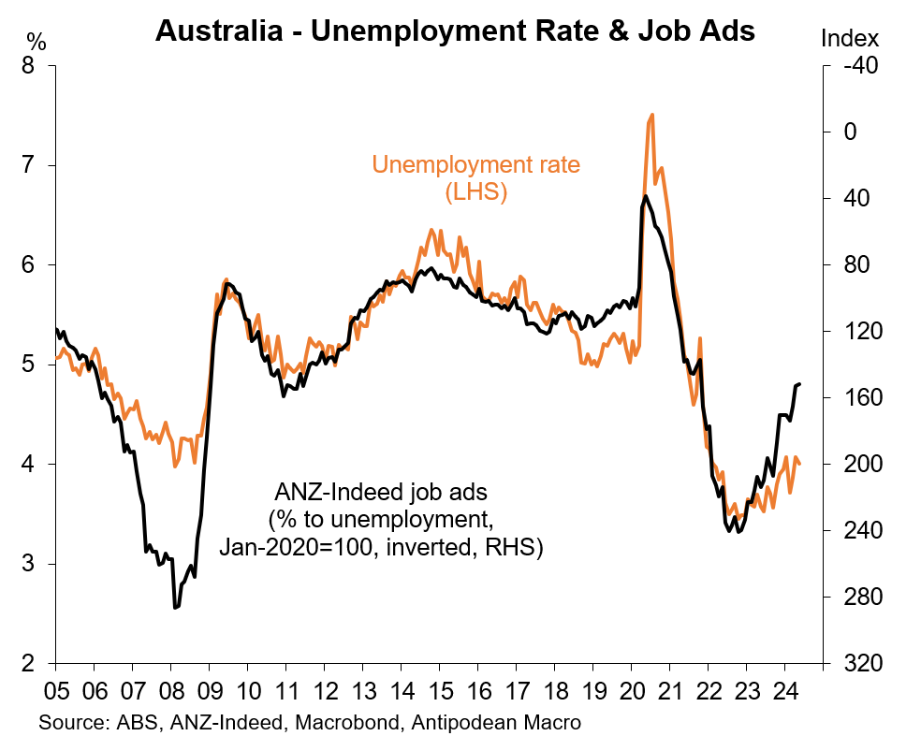
Another point to mention is that the charts above only measure one side of the equation: labour demand via job ads.
We also know that Australia’s labour supply is growing at an abnormally high rate (2.9%) amid unprecedented net overseas migration:
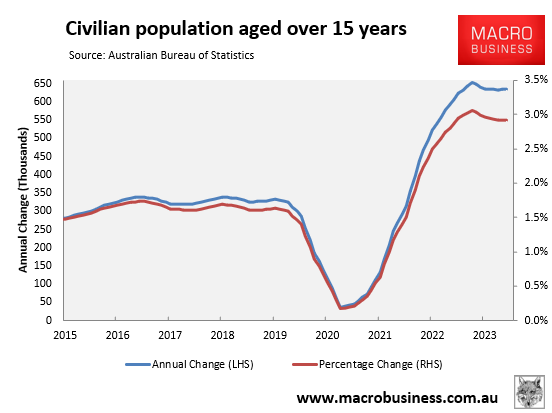
Falling job demand via job ads and strong supply via net overseas migration should mean rising unemployment.
To date, the adjustment has been made by employers cutting the number of hours worked while keeping people employed.
However, this “labour hoarding” can only go on for so long and eventually headcount will be cut.
For this reason, the RBA’s unemployment forecast still looks far too optimistic.

